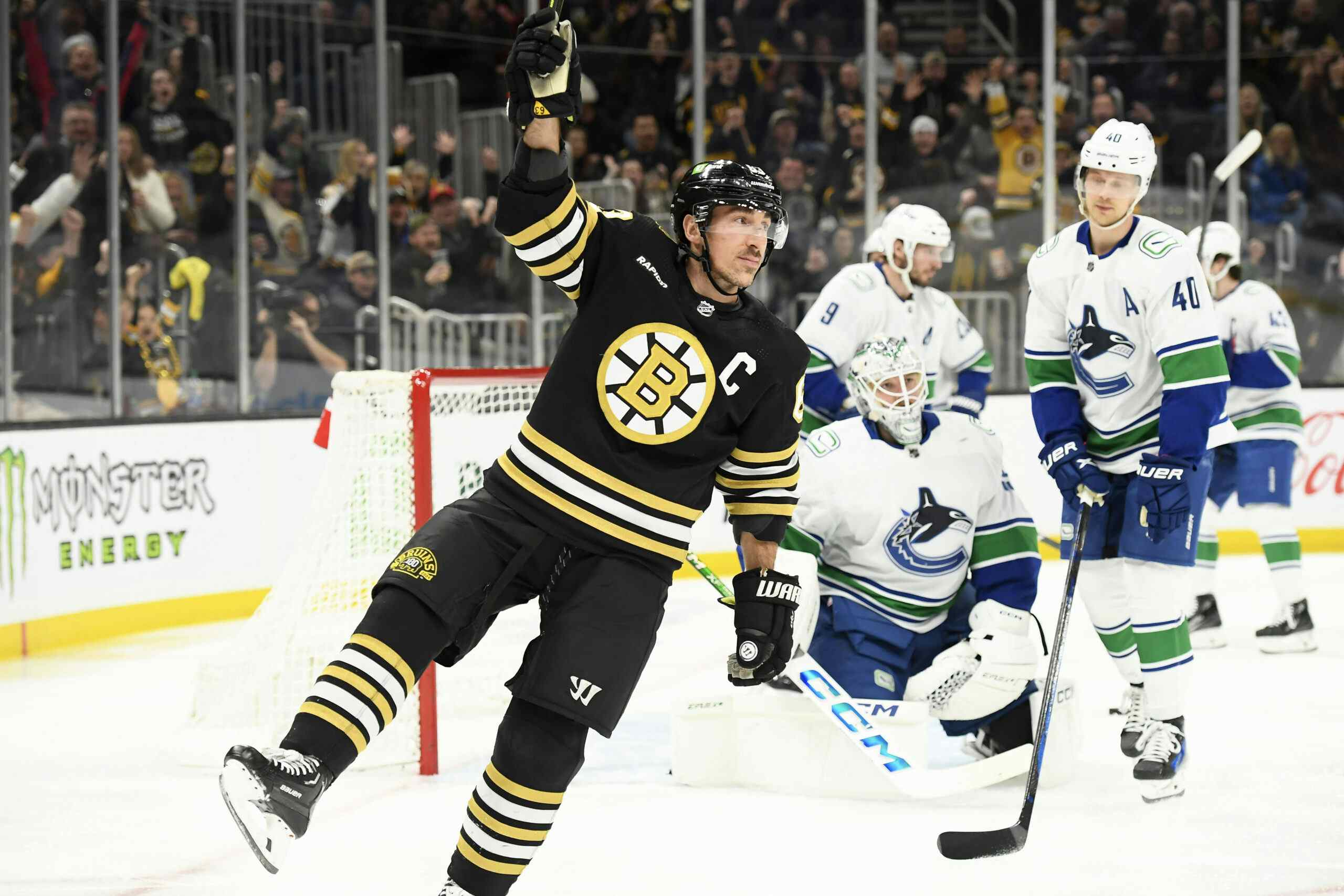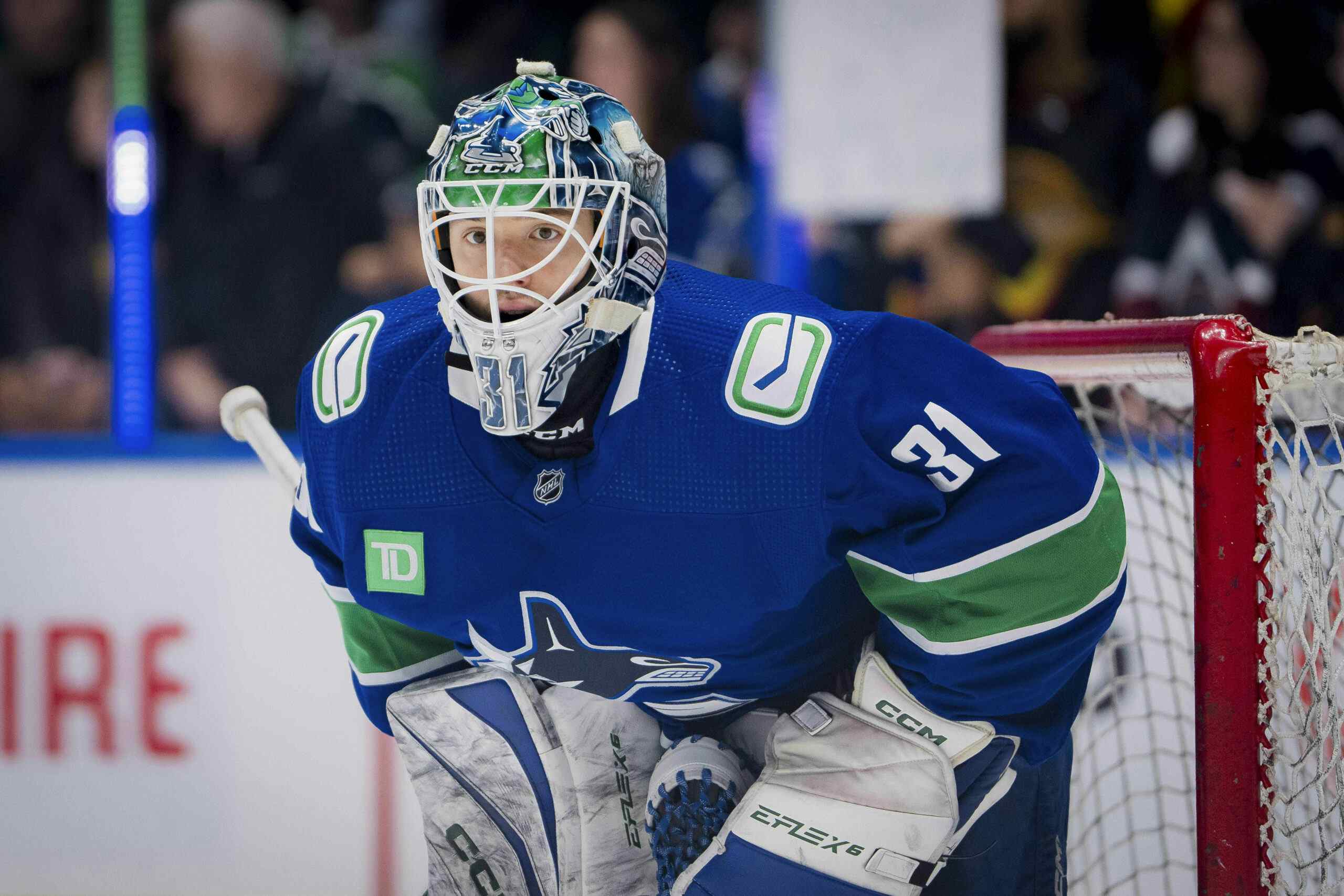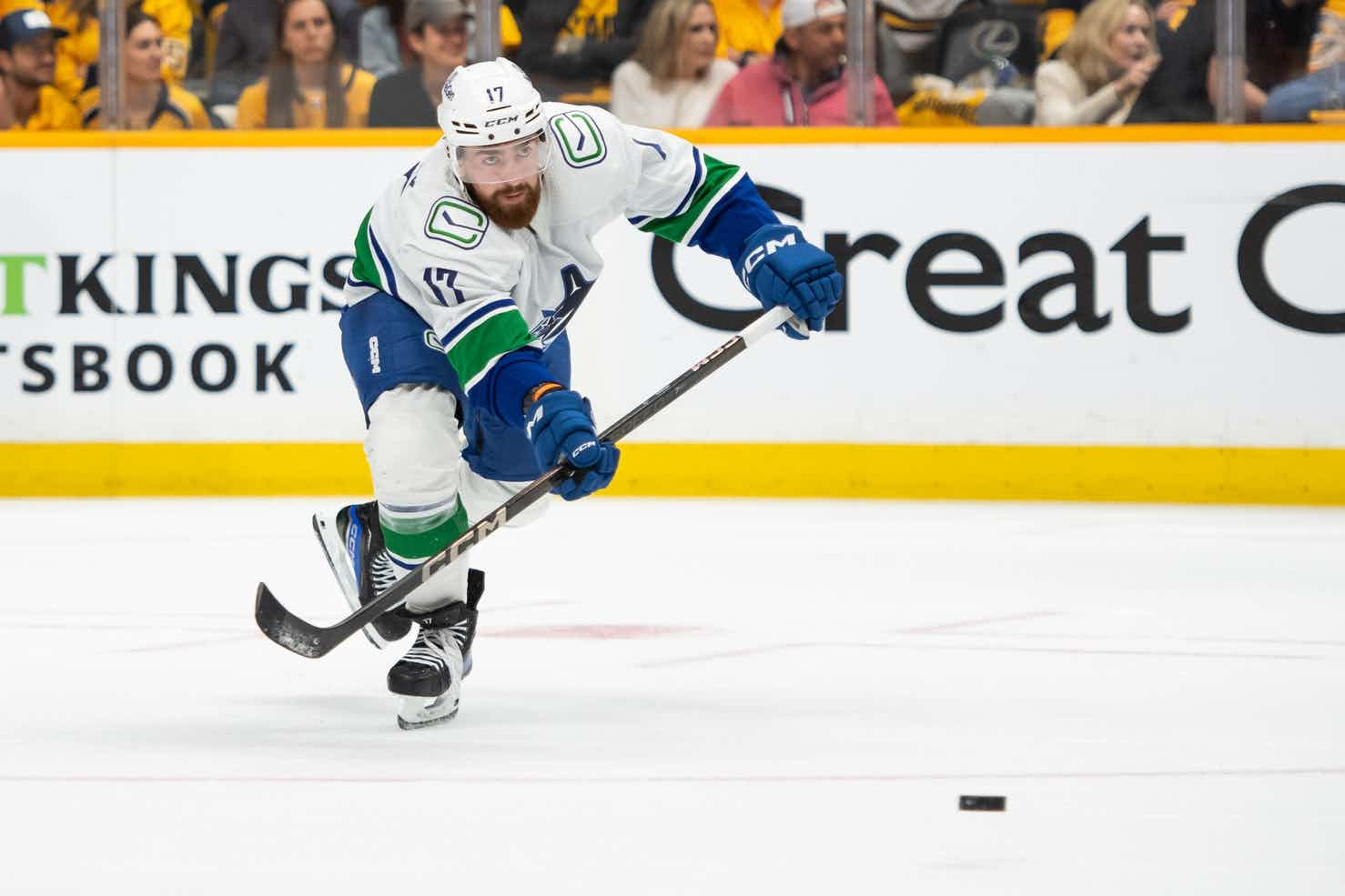The implications of a flat salary cap for the Vancouver Canucks
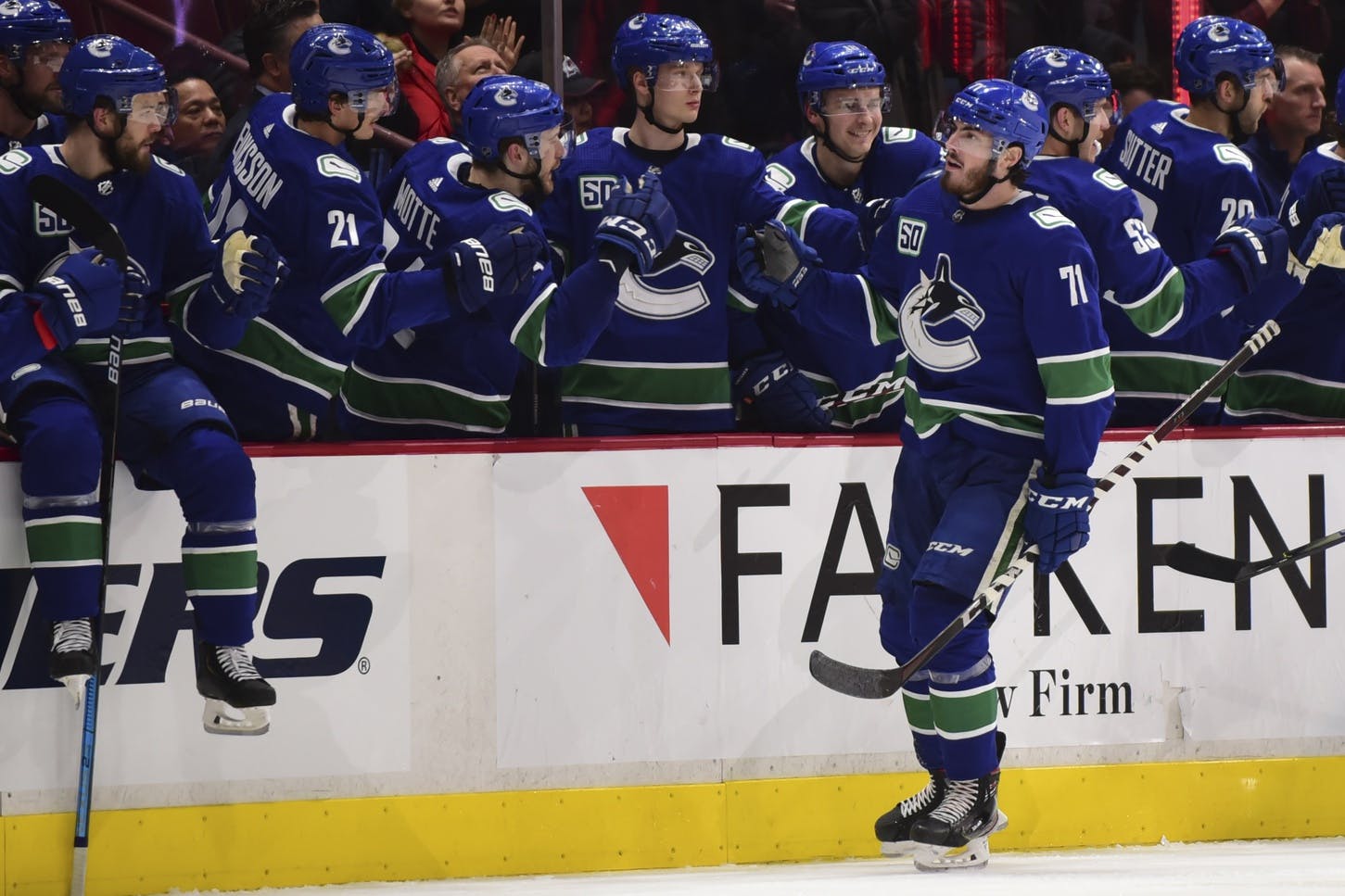
Almost a month ago, Andy Strickland first broke the news that the NHL was planning to keep the salary cap steady at $81.5 million for the 2020/21 season – a result of the loss of revenue caused by the COVID-19 hiatus.
Since then, the league hasn’t contradicted Strickland, and most other pundits have started to discuss that $81.5 million number as if it were a near certainty.
As such, it seems like a foregone conclusion at this point – all NHL teams, including Vancouver, are going to be dealing with a flat salary cap in 2020/21 and perhaps beyond. And that has some pretty serious implications for the Canucks, a franchise that is transitioning from rebuild to contender and needs all the extra dollars it can get right now.
The Canucks’ Cap Situation, Without Any Re-Signings
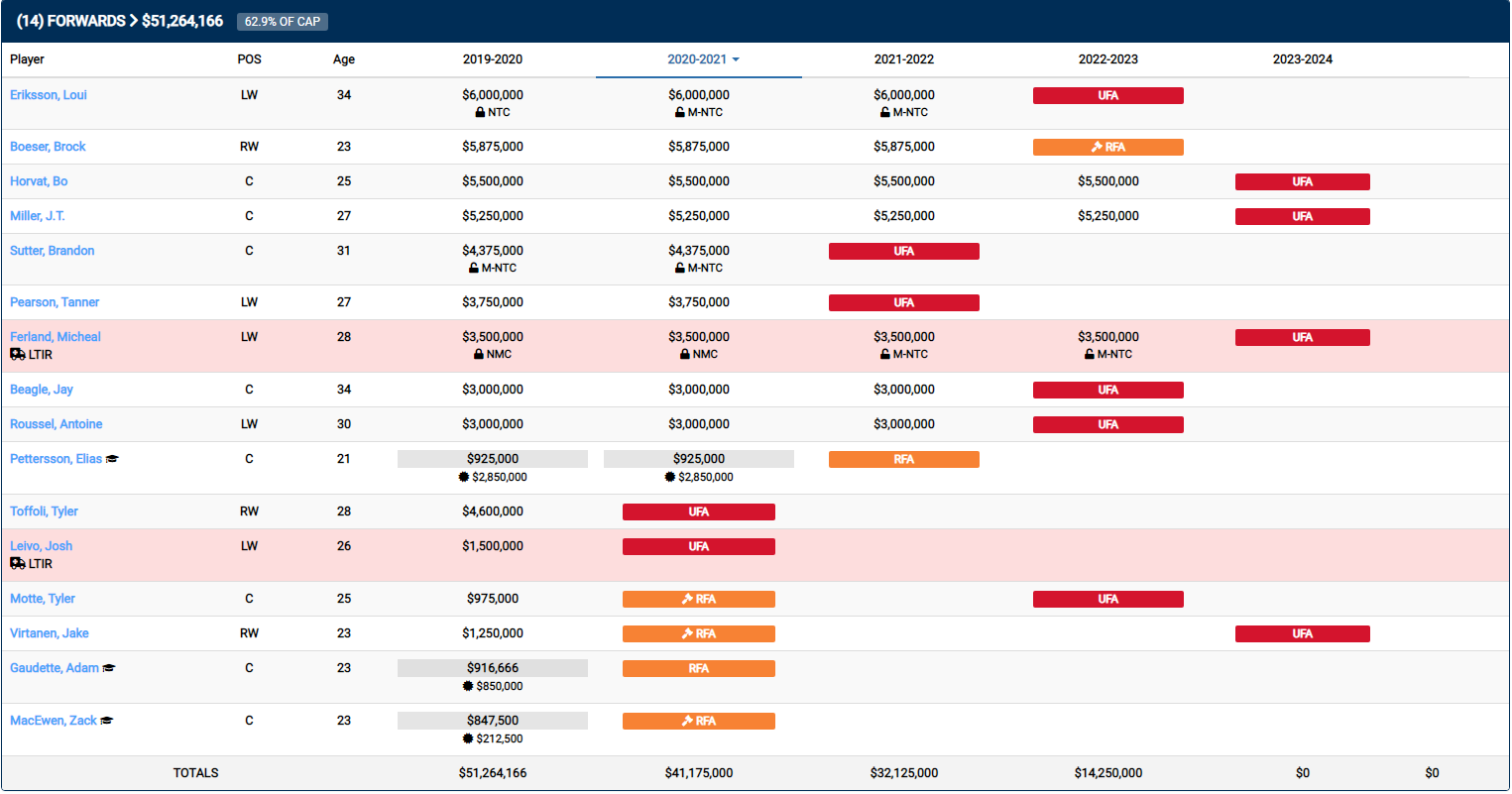
From PuckPedia.com
As of right now, the Vancouver Canucks have approximately $53.65 million committed to 14 different players currently on the active roster – nine forwards, four defensemen, and one goaltender.

From Puckpedia.com
On top of that, you can add $3.5 million for Micheal Ferland on the LTIR, $2.29 million for Sven Baertschi in the minors, $1.03 million for Ryan Spooner’s buyout, and a staggeringly unfair $3.03 million for Roberto Luongo’s cap recapture penalty.
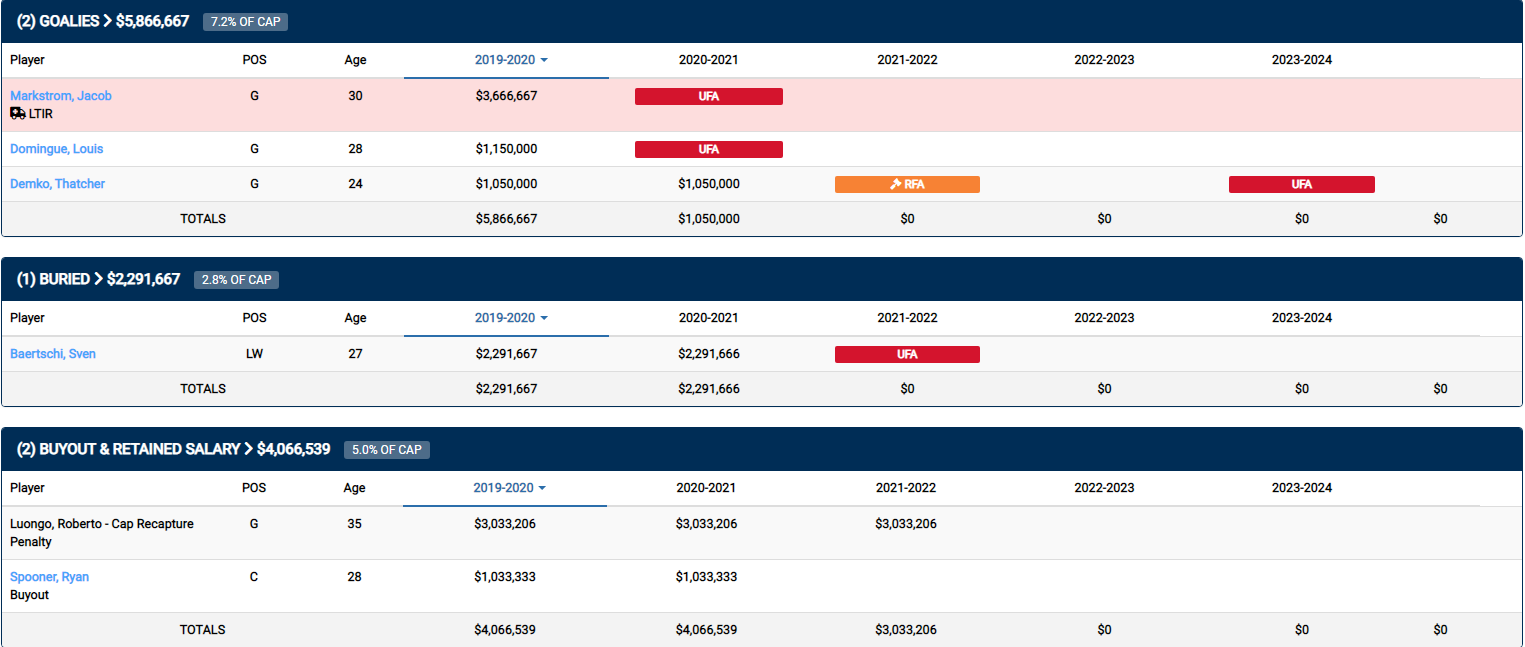
From Puckpedia.com
That gives us a total of about $63.5 million committed already to next season’s cap – and that’s not taking more than $3 million in potential bonuses to Elias Pettersson and Quinn Hughes into account.
Or, put differently, the 2020/21 Canucks currently have, at most, $18 million or so in cap space – and almost certainly a little less than that thanks to Pettersson and Hughes’ proclivity for success.
That’s for just 16 active players, one of whom spent the majority of the season in Utica and another who was on the LTIR for most of the year.
The Canucks will need to fit contracts for another seven to nine additional players into that structure – or an average of $2-2.5 million per contract.
And they’re going to want to spend a lot more than that, given the players eligible for new contracts this offseason.
Factoring In RFA Raises
The Canucks have five players on their active roster that will be restricted free agents this offseason, and the team would probably like to re-sign each and every one of them, if possible.
Tyler Motte and Zack MacEwen are likely to sign new deals worth roughly $1 million each, though it’s not guaranteed that either of them remains on the roster at the outset of 2020/21.
Fresh contracts for Jake Virtanen and Adam Gaudette will not be so simple after their breakout performances in 2019/20.
Earlier in the month, our very own Brett Lee crunched the numbers and came up with a prediction in the neigbourhood of $2 million to re-up Gaudette for two years, so let’s let Brett do our homework for us and take that one as read.
It’s fair to say that, whatever Gaudette signs for, Jake Virtanen and his camp are going to demand more. Virtanen’s cap hit will depend heavily on his term, but a bridge-type deal also seems like the most probable outcome for him, as well – especially given the cap uncertainty. A range of $2.5-3 million for Shotgun Jake’s next contract is a reasonable expectation, so let’s add that to the board.
For those of you keeping score at home, that adds four players to the active roster but also takes up at least $6.5 million of that $18 million in remaining space – leaving just $11.5 million.
And then there’s Troy Stecher.
With an expiring cap hit of $2.33 million, Stecher has to be made a qualifying offer at least that much in order to retain his rights – so that’s the minimum amount to re-sign him. With four seasons of decent-to-good work under his belt, Stecher is going to be looking for a raise to something upwards of $3 million.
That’s certainly doable, but it might not prove to be the wisest way to spend that remaining cap – especially with Brogan Rafferty and his $700K cap hit waiting in the wings. (PS: Check out Chris Faber’s fantastic piece on Rafferty from earlier this week.)
Ultimately, Stecher is the RFA that is least likely to return to the roster, and any contract negotiations with him are going to be dependent on potential extensions for several key UFAs, primarily Chris Tanev.
Speaking of which…
The Markstrom, Toffoli, And Tanev Question
To recap: We’ve added four RFAs to our active roster of 15 and left ourselves with just $11.5 million to sign another four players. If Micheal Ferland remains on LTIR for the foreseeable future, that adds another $3.5 million to the picture, or $15 million total, though it also requires the addition of a replacement player.
That’s almost certainly not going to be enough to re-sign all of Jacob Markstrom, Tyler Toffoli, and Chris Tanev. But before we get ahead of ourselves and take on the big ticket items, let’s do some other UFA-related housekeeping.
Louis Domingue is gone for sure. Oscar Fantenberg will either be kept at the same salary or replaced by a similarly priced player – likely from within the organization.
Josh Leivo is an interesting case. He was off to an excellent start in 2019/20 and on pace to more than double his career best, but then Nick Holden shoved him into the boards from behind and fractured his kneecap. That probably ended his chances of a huge raise, but a bump-up from his current compensation of $1.5 million will probably be required to keep him from the open market.
And as we’re about to see, that might not be possible – so, more on Leivo later.
To simply extend Markstrom, Toffoli, and Tanev at their current cap hits would cost a total of $12.72 million – or, more than leftover that $11.5 million. And all three of them are hitting UFA status for the first time and all are deserving of raises.
To estimate the exact future cap hits of Markstrom, Toffoli, and Tanev would take another entire article, so we won’t get into that here. Suffice it to say, the Canucks cannot keep all three of them without first clearing some serious space. And given the need to fill out the roster to 23 players regardless, it’s entirely possible that Vancouver will only be able to afford one of them until further moves are made.
It’s easy to see why even modest raises to players like Josh Leivo and Troy Stecher might be seen as too rich for the Canucks’ blood if they endeavour to keep Markstrom, Toffoli, and Tanev. But beyond Leivo and Stecher, even more room is going to have to be made.
How?
Making Room
As was already mentioned, Micheal Ferland being on the LTIR allows the Canucks to exceed the salary cap by $3.5 million for the duration of his injury – but too many in the fanbase are taking this extra space as a foregone conclusion. Ferland and his agent have both made it clear that Ferland intends to return to hockey as soon as he’s healthy, and it’s tough to imagine him not passing a physical after what could end up being eight or months off of hockey.
At the very least, the Canucks should be prepared to have Ferland and the entirety of his cap hit on the roster next season.
That means clearing some space elsewhere will be necessary.
The league could throw everyone a bone by allowing for a compliance buyout or two, which would pretty much solve all these issues in one fell swoop – but since when has the NHL ever done anything that works out in the Canucks’ favour?
There’s a chance that overpaid, but still useful, players like Brandon Sutter, Antoine Roussel, or Jordie Benn could be moved without giving up any additional assets, but the odds are long with everyone else feeling the cap crunch, too.
That also means that the cost to move any negative assets, like Loui Eriksson and Jay Beagle, will skyrocket.
There are many possibilities at play, but the most likely outcome is that the Canucks will be faced with a choice between buying their way out of cap hell with future assets or saying goodbye to their premium UFAs.
It’s not an enviable position to be in, but they can take some solace in the fact that they won’t be the only NHL squad in a bad spot. There’s going to be tough decisions made all around the league this summer.
Is There Any Chance Of Further Additions?
The short answer is no.
The long answer is that the Canucks are going to struggle just to ice the same roster they ended 2019/20 with next season under a flat cap, and that making any upgrades is functionally impossible. If anyone new is added to the roster, they’ll be a replacement for a player like Jacob Markstrom or Chris Tanev that the team couldn’t afford, and thus almost certainly a downgrade.
Any significant improvement will have to come from within the organization and the players already on the roster.
2021 And Beyond
As a final, foreboding note, it should be mentioned that any long-term contract signed now has to take into consideration the possibility of a flat cap lasting for multiple seasons. The Vancouver Canucks will need to re-sign both Elias Pettersson and Quinn Hughes to massive new deals sometime before the 2021/22 season.
In other words, even if they’re able to just barely squeeze a roster together this offseason, they’re only dooming themselves to a terrible summer of 2021.
Sometimes, there are no easy answers.
Recent articles from Stephan Roget



